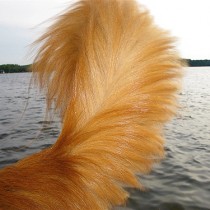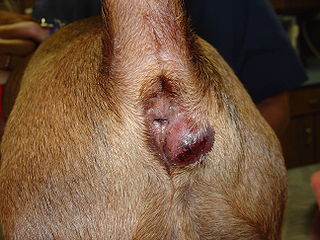Anal Sacs
Anal Sacs ( frequently referred to as anal glands ) are located on each side and slightly below the anus of the dog and cat. They are in essence and infolded skin structure.
Each anal sac has a duct which empties at the edge of the anus. The sacs and ducts are lined with glands which secrete a characteristic foul smelling material.
Part of the secretion of the anal sac may be emptied when the pet has a bowel movement. Many times, however, the sacs are not emptied properly by themselves. The pet may scoot on its rear end in an attempt to relieve the filled sac. Many people associate this scooting with tapeworms or to other worm infestations. By far, however, the largest cause for this scooting is from filled anal sacs. We have, on occasion, seen tapeworm segments which have entered the anal sacs.
Anal sacs serve no useful purpose in the dog or cat. It is believed they may have some territorial marking function.
The anal sacs are a frequent source of infection in the dog. Small poodles and other toy breeds are most frequently involved. If infected, this serves as a reservoir for bacterial organisms which can spread elsewhere in the body. Infections from anal sacs, ears, or teeth frequently enter the blood stream and cause kidney disease. Infected anal sacs may have a discharge which is colored a combination of red, yellow, or green. The normal secretion is yellowish brown.
Before any attempt is made to empty anal sacs it is important to always be able to detect their exact location. If full, they can easily be felt below the surface of the skin. Injury to the sensitive tissues around the anus can occur if excessive pressure is applied to the wrong area.
To express the sacs, first spray a deodorant cologne or skin disinfectant onto a piece of cotton or facial tissue and place this over the anal region. One hand holds up the tail while the other hand is used to empty the sacs. To properly express, gentle pressure is applied directly to the filled sacs in a forward and upward direction. Only the amount which is easily expressed without discomfort should be emptied.
If infected material is detected, you should consult a veterinarian. If neglected, an abscess can quickly occur. On occasion, a swollen red painful area over the anal sac will be seen. This may indicate that an abscess has already occurred and needs the attention of a veterinarian.
Photo credits:
“Ripple” by Sue Richards
“Anal gland abscess” by Joel Mills







